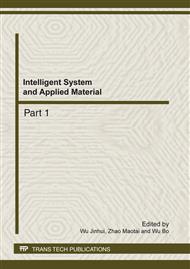p.1382
p.1386
p.1392
p.1397
p.1402
p.1407
p.1413
p.1418
p.1424
A Simulation Environment for Self-Propelled Gun Failure Prediction Based on Probabilistic Neural Network
Abstract:
This paper presents the development of a simulation environment in Matlab/Simulink for the analysis of the Sub-System of a kind of self-propelled gun and the design of fault tolerant control laws for this configuration. The environment includes the input module, output module and Simulation Nucleus and modeling of several types of engine failure. The simulation environment capable of implementing failure prediction has been implemented successfully as groundwork for analysis of the engine subsystem of self-propelled gun. Preliminary simulation results show the simulation environment is efficient for the Probabilistic neural network. Both abnormal oil pressure and rotate speed failures have been simulated. The simulation environment provides the necessary tools for the development and testing of advanced fault tolerant control laws.
Info:
Periodical:
Pages:
1424-1428
Citation:
Online since:
February 2012
Authors:
Price:
Сopyright:
© 2012 Trans Tech Publications Ltd. All Rights Reserved
Share:
Citation:


